Book detective: dating my oldest book finds
From wartime memorabilia to a small-town Gilded Age girl
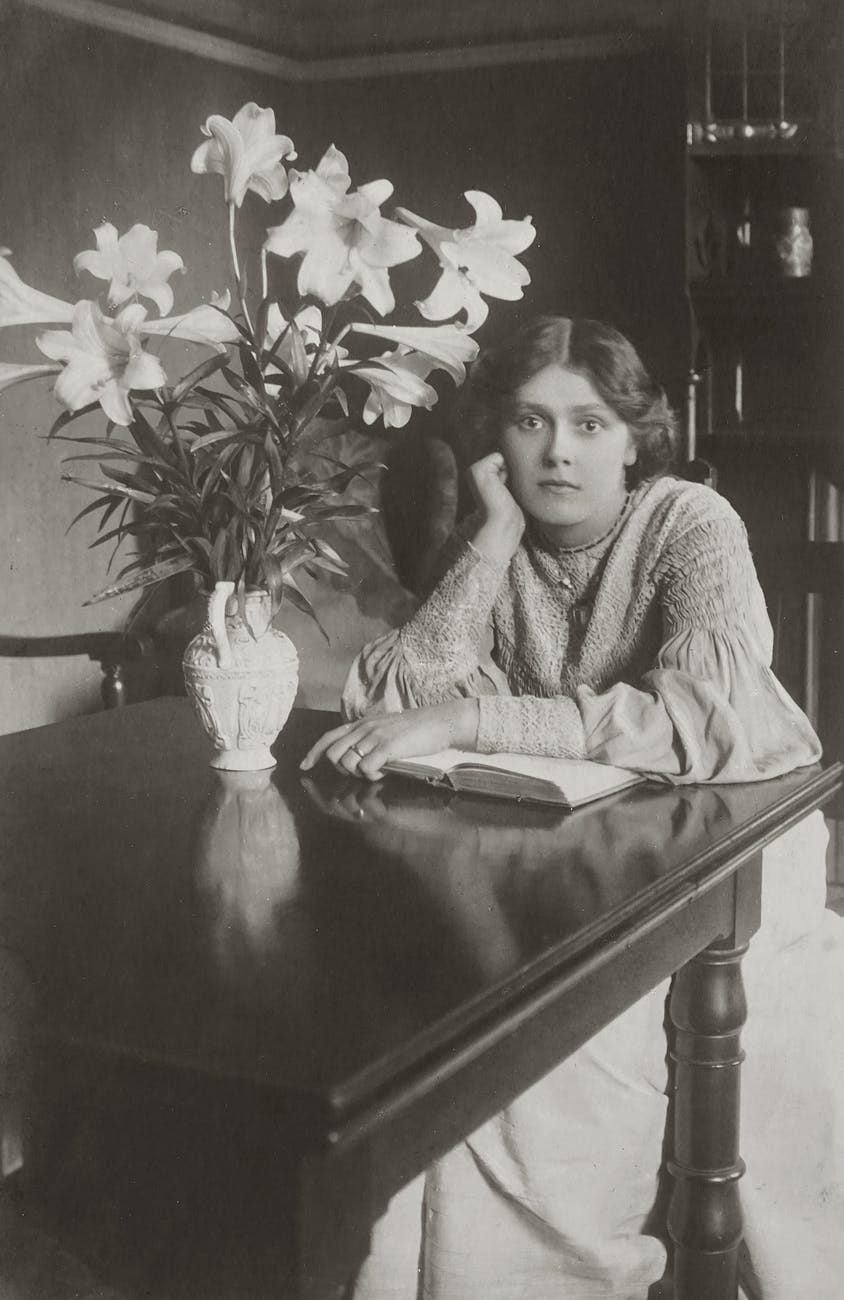
Apologies for letting a couple weeks pass between posts! And a quick life update behind the scenes:
These past two weeks have been continued pregnancy fatigue, taking care of two toddlers, a blessed block leave for my husband, and more minor home renovations (painting so. many. doors.).
Then about a week ago, on the day I hit 21 weeks pregnant, I woke up and started spotting. And continued to spot everyday for the next week. A frantic trip to the hospital on the first day confirmed that the baby was healthy with a strong heartbeat. After several hours and several more tests, doctors couldn’t find anything wrong, but I’ve been instructed to make my way back to L&D the next time I see any blood.
I feel like I’m constantly on call to drop and go to the hospital, which isn’t the definition of “convenient” or a recipe for peace.
Although my gut is telling me everything will be okay, if you could spare some prayers for the health of Maza Baby #3, our family would really appreciate it!
And now, for a welcome distraction from pregnancy worries and a favorite geeky topic of mine: let’s chat old books. Fellow bibliophiles, gather round.
Literary treasures
Over the years of slowly walking the aisles of secondhand and indie bookstores and antique vendors, I’ve tracked down some really cool old book finds.
But how old, really, is that yummy vintage volume I picked up from the thrift store? Do you simply check the copyright page? Not exactly.
Determining how old the book is in your hands can actually be pretty tricky. To help show you how to date your own bookish treasures, I thought I’d go through the oldest books in my own library and explain how I determined their approximate age, by playing book detective.
But first, some basic tips:
Check the title page & copyright page
A title page will probably tell you the name of the publisher, which is a good place to start with research. But the copyright page will give you the bulk of the information you need.
A copyright date is not the same as the year the particular book you’re holding was printed, but it can give you an approximate date to start.
The copyright date will only tell you the year the text was copyrighted. Unless you’re holding a first edition of a book (and most first editions have a note stating that fact), the copyright year can be older than the year the exact book in your hands was printed.
Confused yet?
Most books you pick up will not be first editions. And unfortunately, different publishing houses use different markings to indicate which printing of a book you’re holding, or to indicate the publication date.
Many times, there will be multiple copyright dates on a copyright page, showing the publication history of a book. The book you’re holding can only be as old as the most recent copyright date on the page.
Research the edition online
An ISBN search is a quick way to date your books. But International Standard Book Numbers didn’t exist before the 1960s. Because all the books in this list were too old to have ISBN numbers, determining the age of the edition was more difficult.
To start, try searching the title, publisher, and copyright date online. Then try matching the cover and spine of the book in an image search to confirm you’ve found the correct edition.
It takes a little detective work, but it can also be enormously fun! Here are six of my oldest book finds, ranked from most recent to oldest in my library.
Hardy Boys #3: The Secret of the Old Mill (64-67 years old)
The original text for this book was published in 1927 and then revised in 1959, like many books in the Nancy Drew series. This is a good example of a copyright page that can be misleading, especially in a popular series that gets reprinted over and over again.
Although the copyright page in my edition says 1927 (meaning the text inside is the original 1927 text), the back of the dust jacket provides a big clue. It advertises the Lone Ranger series. The last Lone Ranger book it advertises, The Lone Ranger on Red Butte Trail, was published in 1956, meaning my Hardy boys edition actually dates somewhere between 1956 and 1959, since it contains the original 1927 text before the ‘59 revisions.
That’s a possible 30 year difference between the copyright date and the printing date!
Nancy Drew #16: The Clue of the Tapping Heels (78-81 years old)
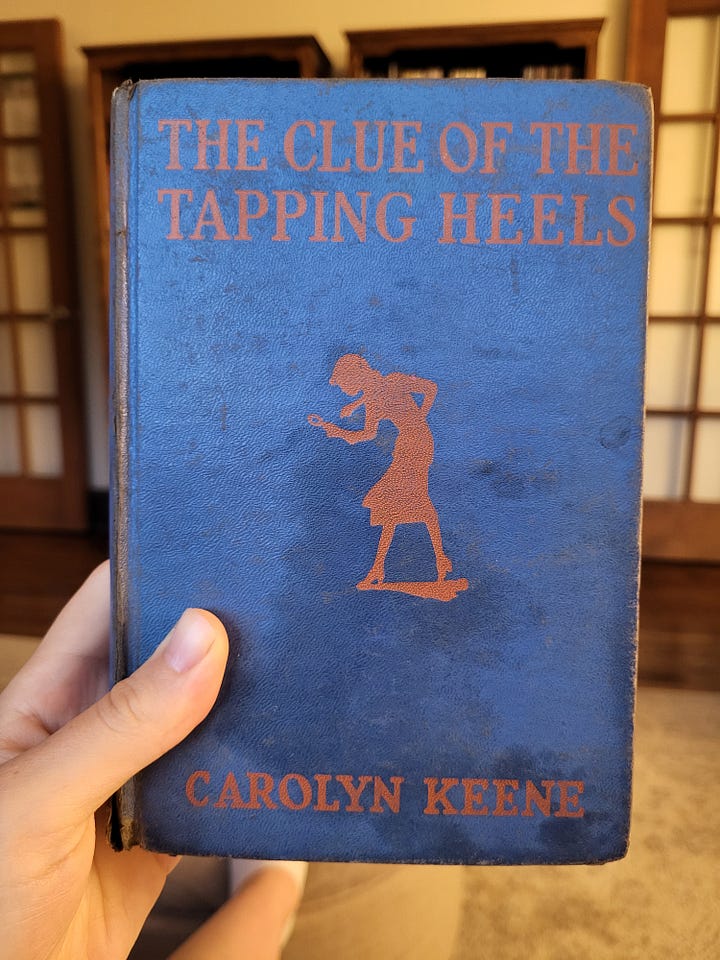
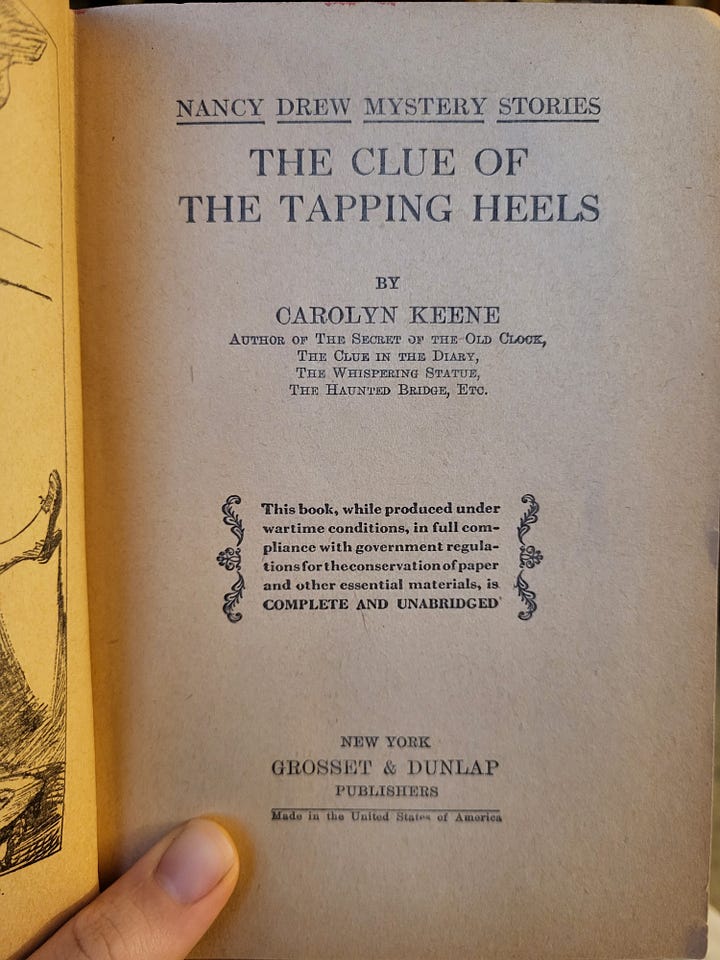
Nancy Drew books are much easier to date, since the different cover designs and endpapers were so distinct between different publishing years. My blue board edition with the orange silhouette on the cover has a copyright date of 1939. These blue and orange covers were printed, according to this source, until 1945. Confirmed by the particular endpapers inside, my edition dates somewhere between 1939 and 1945.
Wartime memorabilia
What makes this particular edition so fascinating is the fact that it was printed during World War II. The title page contains a stamp confirming that it was produced “in full compliance with government regulations for the conservation of paper and other essential materials” (see picture).
Since the book states it was made in the US, and WWII rationing began in the US in 1942, I can probably further reduce the printing window to sometime between 1942 and 1945.
I have a piece of wartime history sitting on my shelves.
My Alcott collection: An Old-Fashioned Girl (97 years old)


I have an eclectic, vintage collection of several Louisa May Alcott books that I discovered almost all at once at a local bookstore. In blind excitement, I grabbed them all off the shelf and bought them.
The oldest book in my collection is a 1926 edition of An Old-Fashioned Girl. This book has the rare convenience of the actual publishing date listed on the copyright page under the copyright dates: “published August, 1926.”
Too easy.
Mark Twain’s Joan of Arc (109 years old)


I found this treasure using my “look up” rule, since older vintage volumes in bookstores are often placed on top of bookshelves, more for aesthetic than easily accessed for sale.
On top of the shelves of a local secondhand bookshop sat a dusty Harper & Brother’s published collection of Mark Twain. The volumes were old and dusty, and they were selling them for $4 each.
The two-volume edition of Joan of Arc that I own is part of this 13-volume collection. My best research actually dates these two books as printed in May 1914, even though the latest date on the copyright page is 1899.
How did I determine that exact month and year? There is a small marking of “E-O” at the bottom of the copyright page, something unique to the history of the publishing house:
Harper and Brothers, one of the many incarnations of the modern day HarperCollins publishing house, used a unique two letter code between 1912-1922 that indicated the month and year of publication. The first letter, A-M indicated the month, January-December. The second letter, M-W, indicated the year, 1912-1922. Source
Honestly, I regret not purchasing the entire collection that day, since purchasing only two volumes split up the collection permanently, altering its value and completeness.
Margaret’s Influence: A Secret of the Confessional (113 years old)
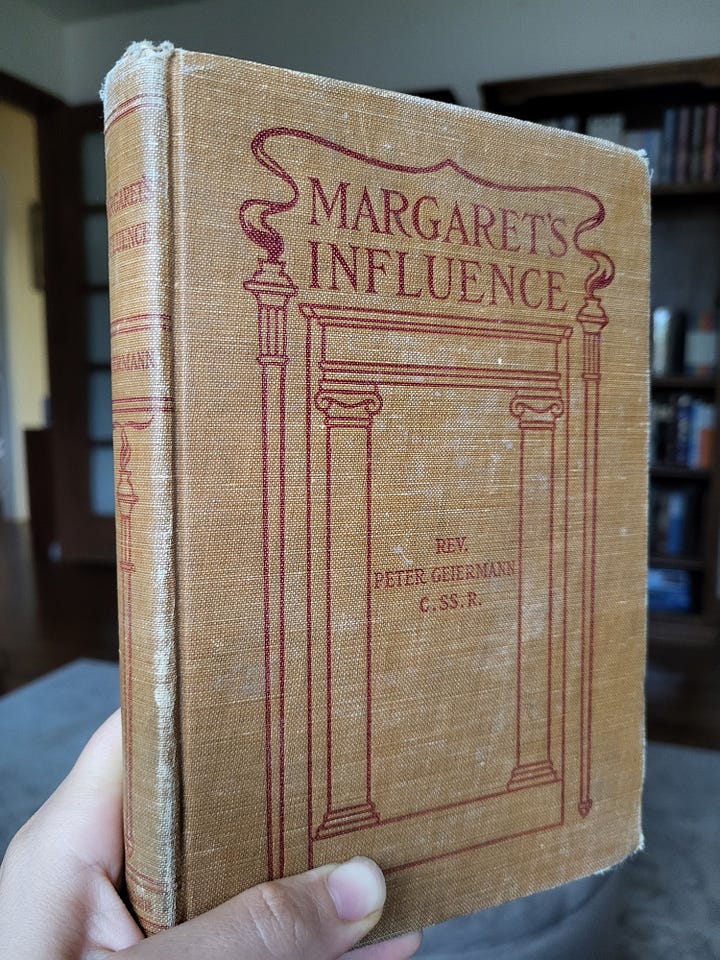
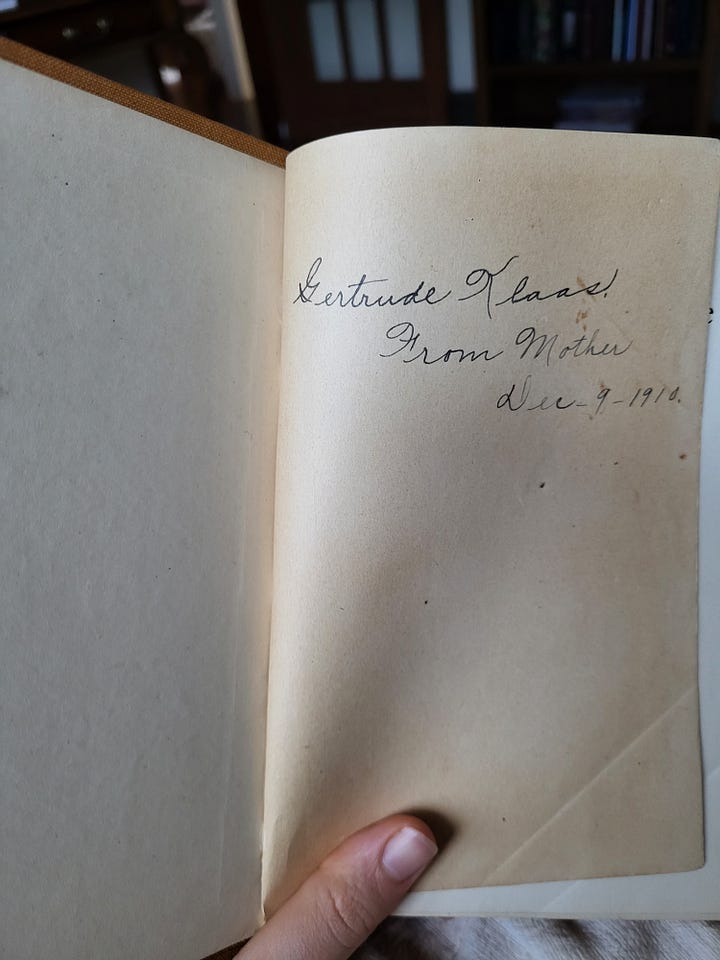
This was a gift from my mother and a rather curious find. I’ve never read it, but the solemn disclaimers in the foreword make me giggle a little:
The reader may be surprised, at first, at the ignorance as well as at the principles and acts of Webster Van Deever. He may be disappointed at a certain weakness in the conduct of Margaret Redmond. But let it be borne in mind that these characters are taken from real life, where, with the exception of Jesus and Mary, no one has attained the perfection of the divine ideal in all details…
Written by a priest in 1910, a note from the author includes the line: “the story depicts the conversion of a young man from the rankest materialism to the true Faith, through the influence of a Catholic young woman.”
I’m pretty dang certain the printing date is 1910, the same as the copyright date, since a handwritten note on the front flyleaf dates it as a gift “from mother” on December 9, 1910 (in the right photo).
The Christian Herald Library (127 years old)
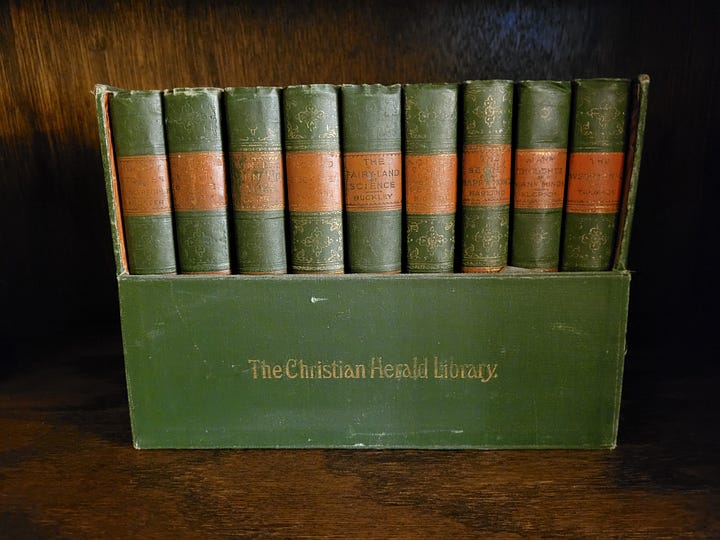

This is the oldest treasure in my library, and one of the only complete collections that I own.
Surprisingly enough, my mom bought it for me off the Instagram page of a local boutique that sold vintage, farmhouse-inspired decor. I don’t think they realized the age or the history it contained.
The Christian Herald Library contains nine tiny volumes with adorable titles that include: “The Wedding Ring” (a series of discourses for husbands and wives and those contemplating matrimony) “The Fairy Land of Science” (ten lectures on natural science given to children), and “The Secret of a Happy Home,” among six others.
And, delight of delights, several of the volumes contain the cursive, handwritten name of the owner: “Julia E. Shawger” and is dated by her as December 21, 1896 (see picture). This confirms that my collection existed in 1896, the same date as the copyright page, making these 127-year-old volumes the oldest books in my library, and my only confirmed books from the 1800s.
A Gilded Age girl
In the second volume of the collection, Julia hand-wrote her name again and “Alden, Iowa” inside the cover. This little detail gives amazing historical context, implying that she owned this book collection in Alden, Iowa in 1896. That’s during the late Gilded Age of US history.
According to the 2020 census, the population of Alden was less than 800 people!
Julia in Iowa in 1896 had no idea that 127 years later, Mariah Maza in Colorado would inherit her collection, where it now sits on my 2023 bookshelves.
Do I own any first editions?
Yes, I do. When my husband was away at bootcamp for 6 months, I wandered into a tiny bookstore on a trip with my parents. I found the entire Malloreon series from the 1980s, one of his favorite fantasy series of all time, in beautiful hardbacks on the shelf. Every pristine volume was a first edition.
I could not believe it! Elated, I bought them for a very special homecoming gift, and they remain on his bookshelf, one of his prized possessions.
And that’s kind of the rule with old book treasures. You have to have the patience to stumble across them over time, and every discovery feels like a happy moment of serendipity.
Are old books worth any money?
Probably not, unless you own a first edition, an edition autographed by the author, a very old edition of a popular classic in pristine condition, a rare book, or a particularly coveted publisher (think Folio Society editions). The book would also need to include its dust jacket, if it had one.
It can be valuable to own a complete collection of volumes as well, like the Mark Twain collection from which I purchased my two-volume Joan of Arc. Or my 1896 Christian Herald Library. In fact, my research revealed it could be worth $200, much more than what my mother paid for it on Instagram! But that’s not a price worth parting with to me.
In reality, the most interesting old books aren’t usually worth much in cash. The history that my oldest books contain are what make them valuable to me, as I imagine the hands and places the books passed through long before they came to my home.
And who knows, in 150 years, where some of my own prized volumes will end up?
Have you ever found an old book treasure?






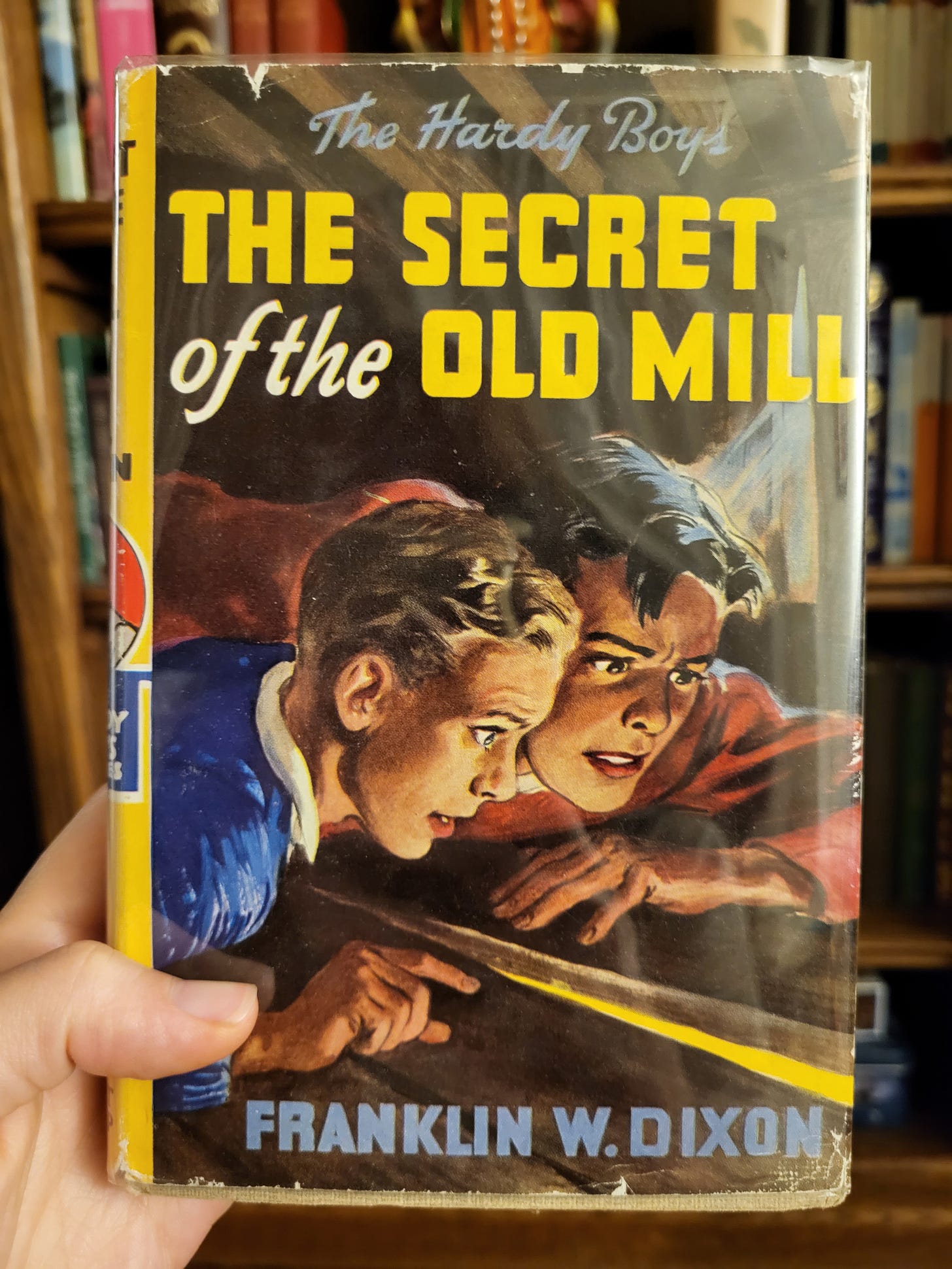
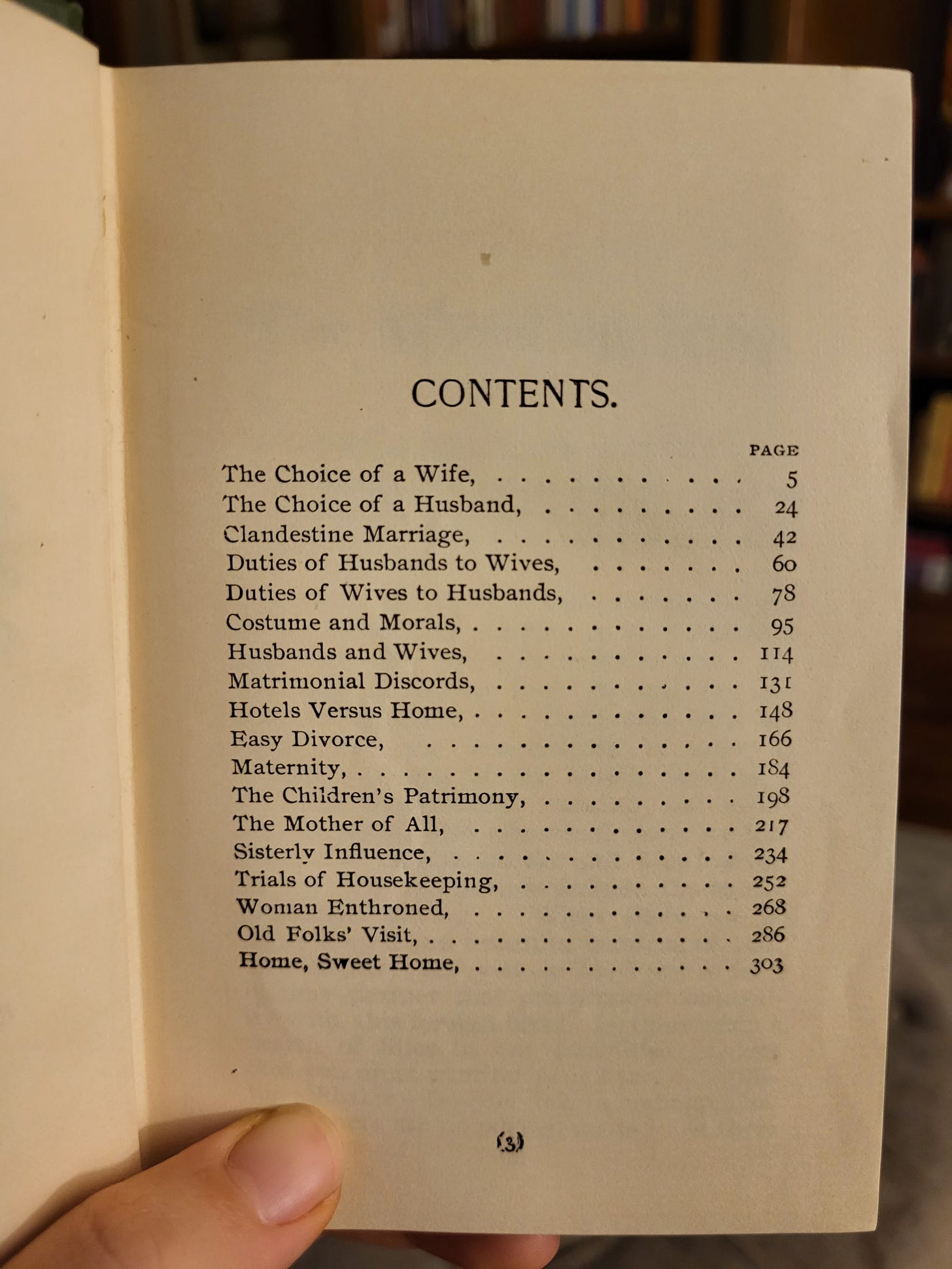
My favorite part of this is the way you describe the personal connection between the person who originally wrote in the front cover and the current holder - I'm looking at a copy of Dune that we own (that, according to your very helpful research, cannot be printed earlier than 1972). The original owner printed her name on a label (looks like a pretty 70s kind of label).
This was so fun to read and very helpful. I even pulled out a few of our books to see which one is the oldest; there's a few that I'll need to do a little more digging to know for sure, but I think the oldest in our collection is a first edition Illustrated version of Oscar Wilde's The Happy Prince and Other Fairy Tales from 1913!
Also congratulations and prayers for baby #3!!!